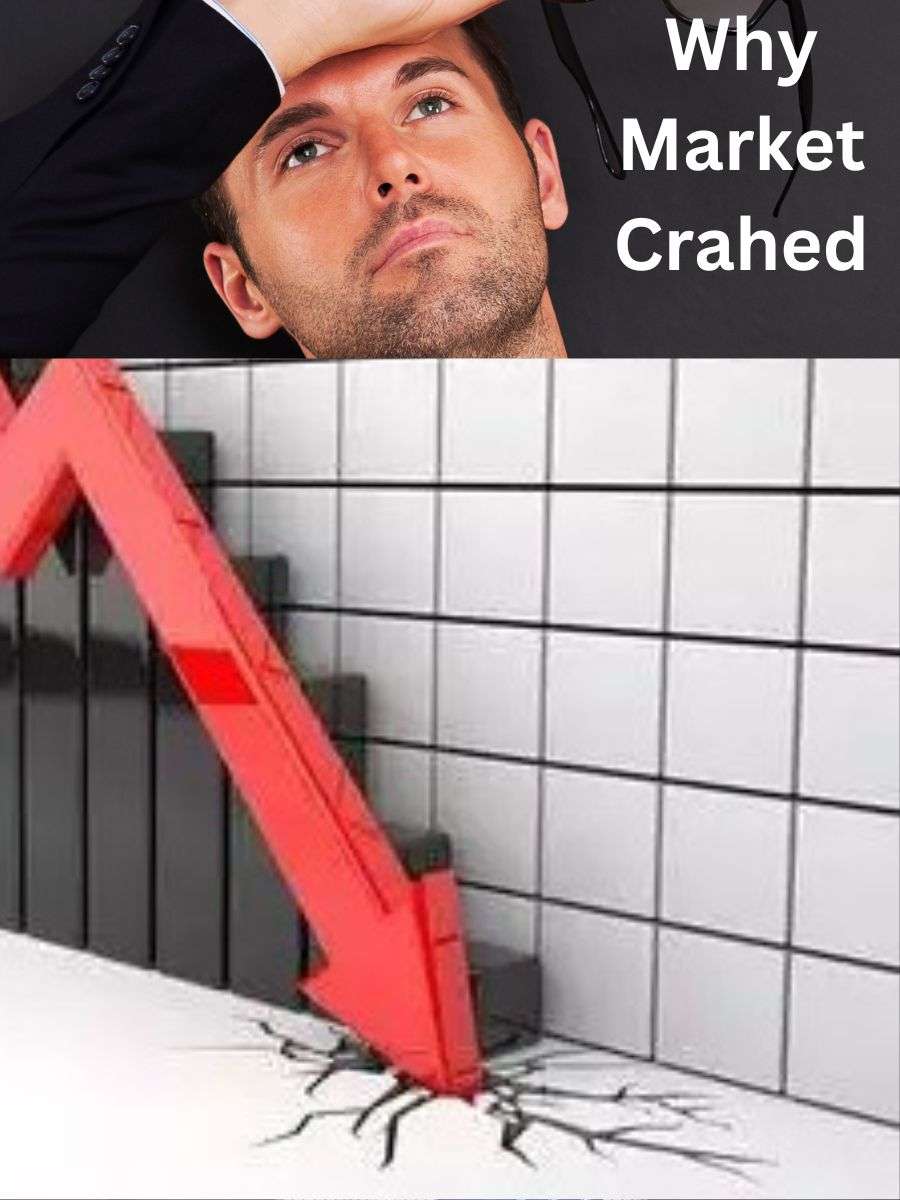Indian Stock Market Crash: October 2024
The Indian stock market witnessed a massive drop today as the Sensex dropped over 1,200 points and the Nifty 50 dropped over 1%. This massive drop in the indices can be attributed to several domestic and global factors, including rising geopolitical tensions and regulatory changes. Below, we explore five key reasons behind today’s market drop.

Stock Market Crash: Escalating Israel-Iran Conflict
One of the key reasons for today’s Stock market crash is the rising geopolitical tensions in the Middle East, particularly the conflict between Israel and Iran. On October 1, Iran fired nearly 200 missiles at Israel following the assassination of Hezbollah leader Hassan Nasrallah. The incident has triggered fears of a large-scale conflict between the two countries, leading to widespread anxiety among investors.
Fears of a prolonged war in the region have roiled global markets, as such conflicts have the potential to disrupt oil supplies, trade and overall economic stability. For Indian investors, the uncertainty of how the situation will unfold has led to a massive sell-off. The Middle East remains a key region for global oil production, and any disruption there could have severe consequences for the Indian economy, which is heavily dependent on oil imports.
As the geopolitical situation remains volatile, fears of worsening relations and potential sanctions have driven investors to safer asset classes, further dragging down the stock market.
Stock Market Crash: Crude oil prices surge
Amid concerns of potential supply disruptions due to the Middle East conflict, crude oil prices have surged. Brent crude futures rose 1.24% to $74.82 per barrel, while US West Texas Intermediate (WTI) futures rose 1.37% to $71.06 per barrel.
Rising crude oil prices are a key economic concern for India, which imports a large portion of its oil. Higher oil prices add to inflationary pressures, affecting both businesses and consumers. Sectors such as transportation, logistics and manufacturing, which are heavily dependent on fuel, face rising input costs, which ultimately affects their profitability and stock performance.
As oil prices rise, India’s import bill also rises, putting additional pressure on the current account deficit. This economic imbalance puts further pressure on the Indian economy, raising fears of slower growth and reduced consumer spending, both of which are negative indicators for the stock market.
Stock Market Crash: Tighter SEBI rules for derivatives trading
On the domestic front, the new rules imposed by the Securities and Exchange Board of India (SEBI) have had a direct impact on market sentiment. SEBI’s latest guidelines introduce tighter controls on derivatives trading, including reducing the number of weekly options contracts and increasing the minimum trading amount.
These changes have made derivatives trading more expensive and complicated for traders, especially those who rely on short-term strategies to make a profit. While SEBI’s move is aimed at protecting market integrity and reducing excessive speculation, it has also reduced liquidity in the market. Traders now face higher entry barriers, and some may hesitate to participate in the market, which could reduce trading volumes and put upward pressure on stock prices.
Investors are concerned that these regulatory changes could slow the pace of market activity, making it harder for them to adapt quickly to changes in the market. The resulting lack of market dynamism is causing concern, especially among those accustomed to a more flexible trading environment.
Stock Market Crash: Foreign Institutional Investor (FII) Selling
Continued selling by foreign institutional investors (FIIs) has further added to the market decline. On October 1, FIIs sold ₹5,579.35 crore worth of Indian equities, extending the trend seen in recent sessions. One reason behind this outflow is the growing attractiveness of other markets, particularly China and Hong Kong, where valuations are lower than India.
Indian stocks have been trading at relatively high valuations, making them less attractive to foreign investors looking for better value. As a result, many FIIs have begun reallocating their capital to markets where stocks are seen as more reasonably priced. This shift in investment flows has led to massive selling pressure in the Indian market, dragging the indices further down hence Stock market crash.
FIIs play a key role in providing liquidity to the Indian stock market, and their exit creates a vacuum that cannot be filled by domestic investors alone. As FIIs continue to sell, the market is expected to remain under pressure until fresh investments come in.
Stock Market Crash: Nifty 50 Technical Breakdown
On the technical front, the Nifty 50 index broke key support levels at 25,700 and 25,500, sparking panic among traders and investors. These levels are considered important indicators of market stability, and a break below these often signals further weakness.
Analysts have pointed out that a break of these support levels could lead to additional selling pressure, potentially pulling the Nifty down by 300-500 points. Traders with long positions have been advised to book profits and wait for more favourable market conditions before re-entering. The technical breakdown has fueled bearish sentiment, with many investors choosing to sell their positions rather than risk further losses.
The combination of global geopolitical instability, rising oil prices, strict regulatory measures, FII outflows, and technical glitches have created a perfect storm for the Indian stock market. Each of these factors has contributed to the broad market sell-off, and until some of these pressures subside, the market may continue to experience volatility in the near future.
Conclusion
Today’s sharp Stock Market Crash, and decline in the Indian stock market is the result of the confluence of both global and domestic factors. The escalating conflict between Israel and Iran, rising crude oil prices, new SEBI regulations, FII outflows, and technical glitches in key indices have all played a role in dragging the market down. Investors are advised to remain cautious as these factors are unlikely to resolve quickly, and the market may remain volatile in the days to come again chances of Stock Market Crash.
ZERODHA 1) : https://zerodha.com/open-account?c=EJ4366
Angelone 2) : https://tinyurl.com/2gloc3g6 or
Upstox3): https://link.upstox.com/9w4tNo1rK8au7VK47









